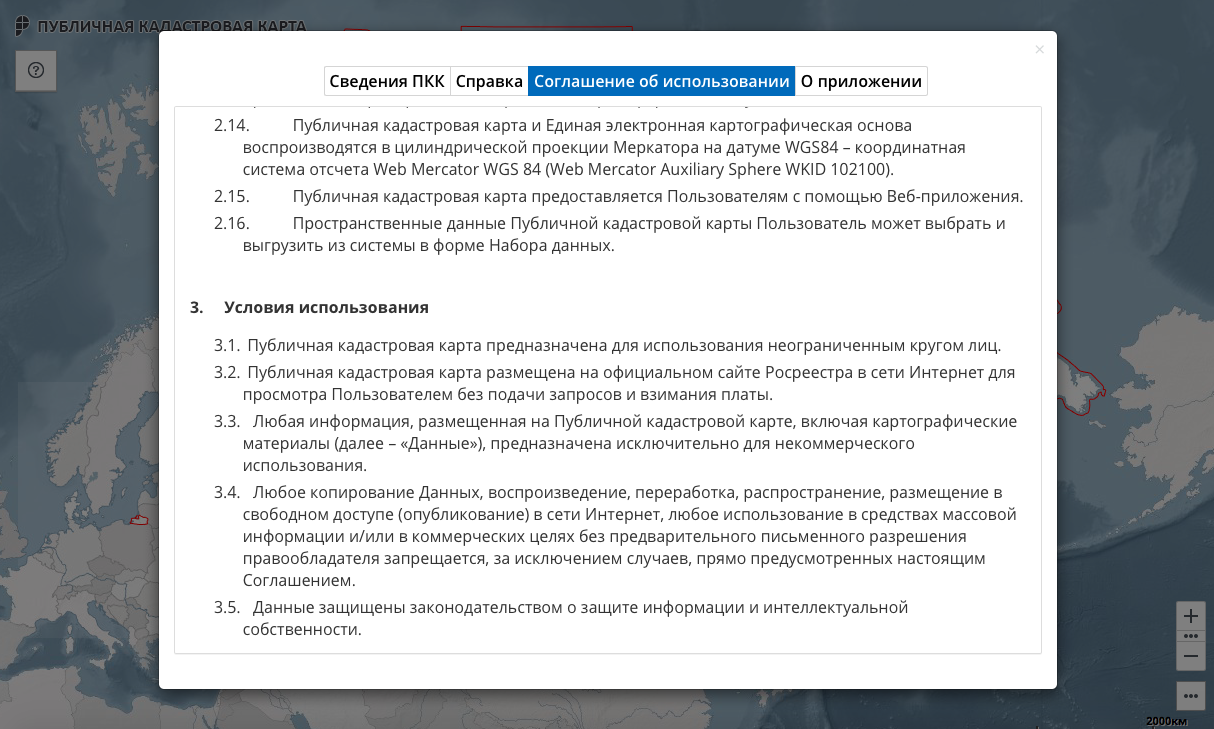Council for open data: openness of the Federal Registration Service and the Federal Property Management Agency, the results of 2017 and plans for the future

At the end of April, a regular meeting of the Open Data Council was held, the agenda of which was the openness of the Federal Registration Service and the Federal Property Management Agency, summing up the open data of the Council on open data and plans for the future.
1. Open data Rosreestra
Rosreestr was one of the few departments (over a year and a half) that did not submit the text of the report or presentation. As materials, only the Departmental Plan of the Rosreestr on Openness was available, containing a list of generalized measures, for example, “audit of information resources of the Rosreestr”, “placement of an updated register of open data sets”, “preparation of press releases about the disclosure of open data”, etc. Neither the open data publication schedule, nor the open data list, nor the report for the previous year, which were present, for example, from the Federal Property Management Agency were attached to the draft plan.
')
From the “specific” there is, for example, an item on the refinement of the open data set “Cadastral Map (Metadata)”. Geodata specialists know that the cadastral map itself in Russia is not in the open data format, despite the fact that according to international ratings this set is one of the key (taking advantage of this, I note that among the key sets in Russia in the open data format there is also no real estate register , transaction data, register of organizations, legislation).
You can look at the cadastral map on the Rosreestr site , but using it (copying data, reproducing, distributing, publishing ...) without the written permission of the Rosreestr is prohibited. According to experts, the problem of lack of access to machine-readable data is not in the map data itself, but in that the copyright protection of the cartographic substrate (i.e. the map drawing) is taken into account, but the issue with the data itself, which are objects, geolocated to the substrate without being subject to copyright. However, at the meeting of the Council, the representative of the Federal Registration Service reported that funds were allocated from the Reserve Fund for the revision of the Unified Electronic Cartographic Base (EEKO), so it is hoped that one of the key datasets will soon appear in the public domain.

The Open Data Council recommended Rosreestru to finalize the Action Plan for openness and develop a schedule for locating open data sets.
The report announced that Rosreestr handles 90 million requests per year, that is, it provides approximately three services per second. My experience with Rosreestr is limited to only one request: Exactly two months ago, while studying the English version of their website, I noticed that Igor Vasilyev was listed as head of the service on the “About Rosreestre” page, although since 2016 this post has been occupied by Victoria Abramchenko. In response to the electronic appeal, an automatic response was received: “Your appeal was submitted for registration”, the information on the site changed after some time, but the response to the appeal has not yet been received, although, in accordance with Russian legislation ( Federal Law “On the procedure for petitions of citizens of the Russian Federation ” ), any appeal of citizens should be sent a response within a month. Is the lack of response random or systemic, I can not say.
2. Open data of Rosimushchestvo
Rosimushchestvo, on the contrary, pleased with the form of submission of materials, presenting a colorful presentation and a text report. The “Open Data” section contains 19 data sets, 13 of which are automatically generated from the “Unified State Property Management System” and are updated daily, the remaining 6 are manually generated and updated weekly. The total number of downloads of data was 12,300 times, and the most popular sets are “Information from the federal property register”, “Planned sales of shares” and “Data on sales of released real estate military property”.
In 2018, the Federal Property Management Agency plans to expand the list of published data, conduct an audit of information resources and organize meetings with application developers based on open data. Prior to this meeting, application developers were implemented only by the Ministry of Finance of Russia in 2014–2016 and were a unique mechanism that allows developers and activists to learn from the original source (federal financial state bodies) information on the development of information systems and plans for open data and, most importantly, set any questions you are interested in and get direct and quick answers to them. Hopefully, the Federal Property Management Agency’s meetings will be just as productive, and the Russian Finance Ministry’s meetings will return in 2018.
Another initiative is the development of Linked Data by the Federal Property Management Agency, which now, judging by the submitted document, has the status “In Work”.
3. Results of the third All-Russian competition “Open data of the Russian Federation”
The results of the competition can be found on the official website . His main feature this year, in my opinion, was the involvement of federal authorities in the development of “50 creative tasks for participants”. On the hackathons that we are conducting, for example, in the framework of the OIG State Reserves project, we periodically encountered the problem of the lack of ideas among the participants, which arose in cases where the programmers were not thoroughly immersed in the subject area of the open data proposed on the hackathon. Therefore, the formation by government agencies of lists of ideas for services and applications could be relevant even outside the framework of contests and hackathons (in that case, of course, if such ideas are not invented “for a tick”).
4. Results of self-examination of federal authorities
The “Quality Index of Work of the Federal Executive Authorities (FOIV) with Open Data”, first held in 2017, consists in the “self-examination” of the federal executive body, during which employees of the federal authority fill out a questionnaire about how the state body implemented the mechanisms of openness during the year. including informational openness, open data, ensuring clarity of legislation, etc. The results for 2017 are available in the presentation of the Open Government , and, judging by the materials submitted to the meeting Open Data Council will be further processed and published.
It should be noted that the plans for openness of the federal authorities, as well as in the methods of self-examination, often include criteria and positions in the ratings of the State Monitor and the Analytical Center under the Government (the second rating assesses the activity according to open data only on the federal open data portal data.gov.ru , not considering the open data sections on the websites of government agencies). As is known, often the ratings are not only one of the motivations of state bodies, but also a headache (in cases where the evaluated criteria raise questions). Today, we are in a situation where the AIS “Monitoring of State Sites” and the Federal Open Data Portal are switched to maintenance mode, while the date of the resumption of their work is not reported anywhere.
5. About promising areas of work with open data
The project of Priorities of the Open Data Council for the next three years is focused on regional state bodies, state development institutions of the federal and regional levels and state corporations.
The priority areas, judging by the project, are the improvement of open data planning activities; improvement of legislation; increasing the demand for information (enrichment of open data sets) and the development of infrastructure and scientific and methodological support of open data.
Since now this document is in the status of the project, and no one knows the structure of the future government and the place of open data in it, it does not make much sense to go into details, but one moment I cannot help noting.
The draft attached a list of key thematic areas, consisting of 17 points. It has, for example, small and medium enterprises, transport, elections, spatial data, housing and public utilities, open science, public investment and public procurement, and more. What it lacks is the registry of organizations, which is not only one of the key sets of open data, but its absence in a machine-readable format makes it difficult (or in some cases even makes it impossible) to use other open data.
This is due to the fact that open data, even those that are automatically generated from federal information systems, contains a large number of errors and typos that do not allow identifying the organization, and therefore “linking” the data or preparing an analyst. Another problem is the use of different identifiers in different data arrays, for example, some data arrays contain only TIN and KPP, others - OGRN, others - only the name of organizations. In the last six months alone, we encountered erroneous OGRN in the registry of NGOs of the Ministry of Justice, errors in specifying the TIN and KPP in the data on government contracts and public procurement, errors in the names of organizations receiving federal subsidies. By the way, if you want to learn more about financial data, you can come to the events of the State Budget May 12 in St. Petersburg and May 16 in Moscow . There, however, there will be not only financial data, but also OpenRefine, but there will be more data structure and quality.
In this case, it is not even about the publication of the Unified State Registration Code and the EGRIP. By the way, due to the provision of paid information and documents from these registers, the federal budget received about a billion rubles in 2016 (losing the potential taxes on the incomes of organizations for which the annual fee of 300 thousand rubles for machine-readable data is too high ). This refers to the minimum set of fields to identify the organization. The minimum set of fields includes: INN / KPP, OGRN, OKVED, the name of the organization and the date of registration / liquidation. We have been working on the openness of these data since mid-2015, but today the position of the relevant federal authorities is that “any person or organization” on the website can generate an extract from one organization, and charging for the use of the Unified State Register and EGRP in IT systems are considered to be justified by state bodies. ” The proposal to include this data in the openness plan was announced at the council, let's see what this will lead to.
Instead of conclusion
The general subjective impression about the structure of this meeting: it turned out to be more concise and informative - the oral reports did not duplicate the printed materials, the questions and comments were prepared; and about the content: if after some time in Russia a cadastral map appears in the format of open data and the register of organizations, then the meeting on the Council on open data was not in vain.
Source: https://habr.com/ru/post/358140/
All Articles